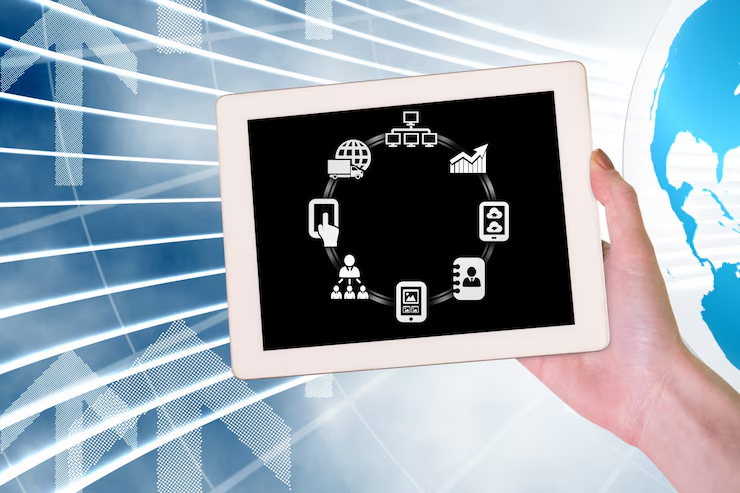A seismic shift is taking place in the telecom industry, traditionally characterized by centralized infrastructure and hierarchical networks. Edge computing is tearing apart the cathedral of established IT practices, with its promise of data processed at a location closer to the device, ushering in the question: is this the end of the telecom world as we know it? In this blog post, we discuss how edge computing could benefit MNOs and the greater Telecom ecosystem.
Today, edge computing deployments are surging thanks to the rapid increase of IoT devices, the need for real-time apps (like self-driving cars or augmented reality), and the latency constraints of central cloud systems. Major players are investing heavily in edge infrastructure, placing data centers and micro-data centers closer to where end-users are located. But this fledgling technology does have its downsides. Inevitably, there are still considerable challenges in terms of security, interoperability and unified management across the various edge deployments. What The Edge Costs as a Leverage of Capital and Skills —The need to build and maintain a geographically distributed edge network is highly expensive in capital expenditure and specialized skills.
The importance of this technological convergence is not to be underestimated. Edge computing provides considerable advantages such as lower latency, better bandwidth efficiency, and stronger data protection scenery, which are all critical for the forthcoming generation of connected services. However, its disruptive potential also poses risks to traditional MNOs. Their current network setup will become somewhat obsolete, and they will have to pivot and possibly completely reinvent their business models. For instance, MNOs may use their existing network footprint to emerge as major edge providers, offering enterprise clients things such as edge data storage and computation.
We will discuss edge computing in detail, along with its advantages and challenges, then draw parallels to how it could revolutionise the telecom industry and present an opportunity for MNOs to embrace this change as part of the new paradigm – or reject it trigger in its extinction, and ultimately whether edge computing would lead to the extinction of traditional telecom or create a continuous cycle of innovation and improved service delivery.
The edge computing market is booming, spurred on by the expansion of IoT devices, the need for real-time data processing, and a demand to lower latency. But this growth comes with its Also, data is mostly the raw material of this rapid expansion.

Positive Trends:
- A Step towards Greater 5G and Private Networks Adoption: Low latency and high bandwidth of 5G are critical for the success of edge computing. Private 5G networks provide enhanced control and security, driving adoption across sectors including manufacturing and healthcare. Also, big telecommunications companies like Verizon and AT&T are investing exponentially into 5G infrastructure, which also creates opportunities for edge service providers. This trend enables quicker data analysis and enhanced real-time strategies.
- AI and Machine Learning At TheEdge: AI algorithms can be run closer to the source of the data to minimize latency and bandwidth usage, driving real-time intelligence and automation. Compliant enterprises can deploy AI/ML models at the edge with services like AWS (with AWS Outposts) and Google Cloud (with Anthos). This trend allows businesses to build applications that are more responsive and intelligent.
- Increased Attention to Cyber Security: As we push data processing to the edge, the data security gain extra importance. This has resulted in specialization around edge security solutions, as well as an increased focus on edge data protection. The demand is being filled by companies like Fortinet, which offer edge security. So this provides opportunities for security vendors and improves trust in edge computing as a whole.
Adverse Trends:
- Complexity of Edge Deployment and Management Deploying and managing edge infrastructure is complex and requires specialized skills and expertise. This raises operational costs and requires strong partnerships with technology providers. One of the most significant challenges is the shortage of competent professionals.
- Standardization Challenges: Different edge platforms and devices may not follow the same standards, which can limit interoperability and data transfer between them.* This fragmentation can result in vendor lock-in and higher complexity. This challenge can be mitigated through industry efforts towards standardization.
- Data Privacy and Regulatory Compliance: When processing sensitive data at the edge, it is vital to ensure strict compliance with data privacy regulations, such as GDPR and CCPA. This requires a substantial investment in data governance and security, making things even more complicated for business.
Actionable Insights:
- Focus on building skills: Companies can work to overcome the shortage of quality edge computing professionals through recruitment and training.
- Open standards: Push for and use open standards to increase interoperability and reduce vendor lock-in.
- Secure edge data: Protecting sensitive data at the edge will help meet compliance requirements and end-user trust.
- Form alliances: Work alongside tech partners that specialize in deploying and managing edge infrastructure.
- Vertical solutions: But I think ultimately, you have to build vertical solutions, and you can only build them at the edge.
Conclusion:
Verticals In high demand Edge computing market landscape There are opportunities for growth, but the successful development of the industry depends on the solution to problems. For companies that take these trends seriously— invest in talent and proactively consider security and interoperability — those companies will position themselves best to succeed as this landscape evolves at lightning pace. The next phase of edge computing will be characterized by smooth incorporation, improved safety, and the creation of the new, unique solutions to industries.
- Healthcare: Edge computing is used in remote patient monitoring applications where it processes data from wearable sensors in near real-time. The IoT devices also offer the ability to constantly monitor and measure patients, and are able to trigger an immediate alert to medical staff if a patients vital signs deviate beyond predetermined parameters, allowing for quicker corrections that could save lives. However, a weakness is the dependence on stable network connectivity for data transmission; outages may undermine system efficacy.
- TECHNOLOGY: Content delivery networks (CDNs) use edge servers to cache popular website content nearer to end-users. This helps reduce latency and facilitates speeds for applications such as video conferencing and online gaming. However, the operational burden of managing and securing a distributed network of edge servers is substantial.
- Automotive: Edge computing plays a critical role in autonomous vehicles’ processing of sensor data (cameras, lidar, radar) for real-time decision-making. This capability will reduce reliance on being connected to the cloud for some of the more important on-board functions such as obstacle avoidance. This poses the biggest challenge of high computational power at the edge, which needs effective and resilient hardware.
- Manufacturing: In smart factory environments, Industrial IoT (IIoT) deployments use edge computing to continuously monitor machines and analyze data in real-time on the factory floor. This allows for predictive maintenance, increasing production efficiency by catching potential equipment failures before they happen. Security risks expressed when connecting multiple devices and the possibilities of data theft are most important.
- Retail: Edge computing leverages smart shelves in retail stores that monitor inventory levels in real-time. It includes information on the food items that are most frequently ordered by customers, helping managers stock accordingly and minimize waste. Data privacy related to customer shopping patterns requires special consideration and strong security protocols.
- Summary: Edge computing provides key benefits with regards to speed, reduced latency, and improved data security for some use cases. Still, the complexities of distributed systems, network reliability, and security hurdles remain unscalable. Successful deployment is a result of sufficient planning, investing in robust infrastructure, and keeping data security as a top priority. Mobile Network Operators (MNO) are also an influential part of this equation as they provide the underlying network connectivity that allows edge deployments to meet the demands of even the most bandwidth-constrained environments. MNOs have a crucial role to play in making the most of edge computing, especially through strategic partnerships with companies in multiple sectors.
- Inorganic — Strategic Partnerships and Alliances — Since 2023, several edge computing players have been entering into strategic partnerships such as the recent moves with telco companies such as mobile network operators (MNOs) For example, the leading edge platform provider may partner with a large MNO to deploy the edge nodes in the MNO existing cellular infrastructure. This also enables quick deployment, but uses the MNO’s existing network coverage. The strength is access to a vast network of infrastructure and customers. On the other hand, a drawback might be reliance on a single partner that potentially reduce flexibility and restrict market access in case of a partner failure.
- Vertical Market Specialization (Organic): Businesses are increasingly narrowing the concentration of their edge solutions on vertical markets. Or a provider that only does industrial IoT may design edge computing platforms specifically tuned better for factory automation or smart manufacturing. This microfocused strategy enables deeper domain expertise and stronger value propositions. The market leadership in niche segments and insight about customer needs. Limited market size, being a vertical play, makes you susceptible to changes within the vertical sector.
- Software-Defined Edge (Organic): There is progress in leveraging software-defined edge architectures. It provides more flexibility, scalability, and automation to manage and deploy edge resources. Companies are building their platforms with programmability and interop with other cloud and network services in mind. The upside is greater agility and efficiency. Weakness — It could be complex managing software-defined infrastructure. This involves a considerable commitment in terms of resources and a community of capable individuals coupled with solid security measures.
- Data-to-Insight (Organic) — AI/ML Integration: Edge computing providers are integrating advanced AI and machine learning capabilities into their edge platforms. Real time data processing and analyzing at the point closer to the data provides quicker insights and better decision making which comes to use of this. Take a company that provides AI-based anomaly detection for industrial sensors, which allow for predictive maintenance. The strength is advanced capabilities, better data analysis, and quick response. A potential weakness is the computational power (and energy) required.
- Final Analysis {The strategies mentioned show that the edge computing market continues to me evolving. A healthy mix of partnerships with the right players plus organic growth initiatives capitalizing on niche expertise, software-defined architecture, and AI/ ML capabilities seems best! And while it’s easy to lean on one strategy or another, over-reliance creates vulnerabilities. Achieving success will require balancing your strengths and weaknesses, and the ability to pivot in reaction to changes in your market, or new technology coming into your space.

Summary & Outlook: Telecom Disruption via Edge Computing
Telecom will be drastically reshaped by Edge computing over the coming 5-10 years, even if that won’t mean the complete destruction of existing Mobile Network Operators (MNOs). Instead what we’re more likely to see is a complicated mix of cooperation and competition. The advantages of edge — low latency, less bandwidth use, improved security of data — are inarguable advantages for applications such as autonomous vehicles, IoT device management and real-time industrial control. This will incentivize significant MNO Capex towards Edge and enable new revenue opportunities through specialized services.
However, challenges remain. Edge deployments are by their nature fragmented, the distributed infrastructure requires strong security measures across varied environments, and those measurements are hard to put in place. Because they are already in an existing infrastructure and have a customer relationship, MNOs have a natural moat against total disruption. They can build Edge capabilities into existing offerings to Hybridize them into cloud-Edge solutions, monetizing their assets.
Meanwhile, the economic model around Edge is still in its infancy. Converging the Edge with the public cloud architecture while developing more optimal and cost-effective pricing, revenue sharing mechanisms between Edge providers and MNOs from a cost-effectiveness perspective to traditional centralized deployments needs work too. A clear illustration of this is with smart city initiatives: Edge facilitates quicker response times over centralized solutions for traffic management, but the required CapEx and on-going OpEx must be appropriately weighed against a centralized approach.
So either way, Edge computing is not going to replace MNO, it is going to make them to transform massively. MNOs who hop on to the Edge technology train, evolve their business model and build niche partnerships will be the ones thriving. For the ones that cannot evolve, there is a risk of becoming simply providers of infrastructure — losing control and access to valuable data and services.
The takeaway is that the telecoms future isn’t a zero sum game. It’s about strategic nimbleness and the courage to lean into technological change. The question is, are MNOs ready to up the ante or be left behind in the emerging Edge-centric marketplace?






